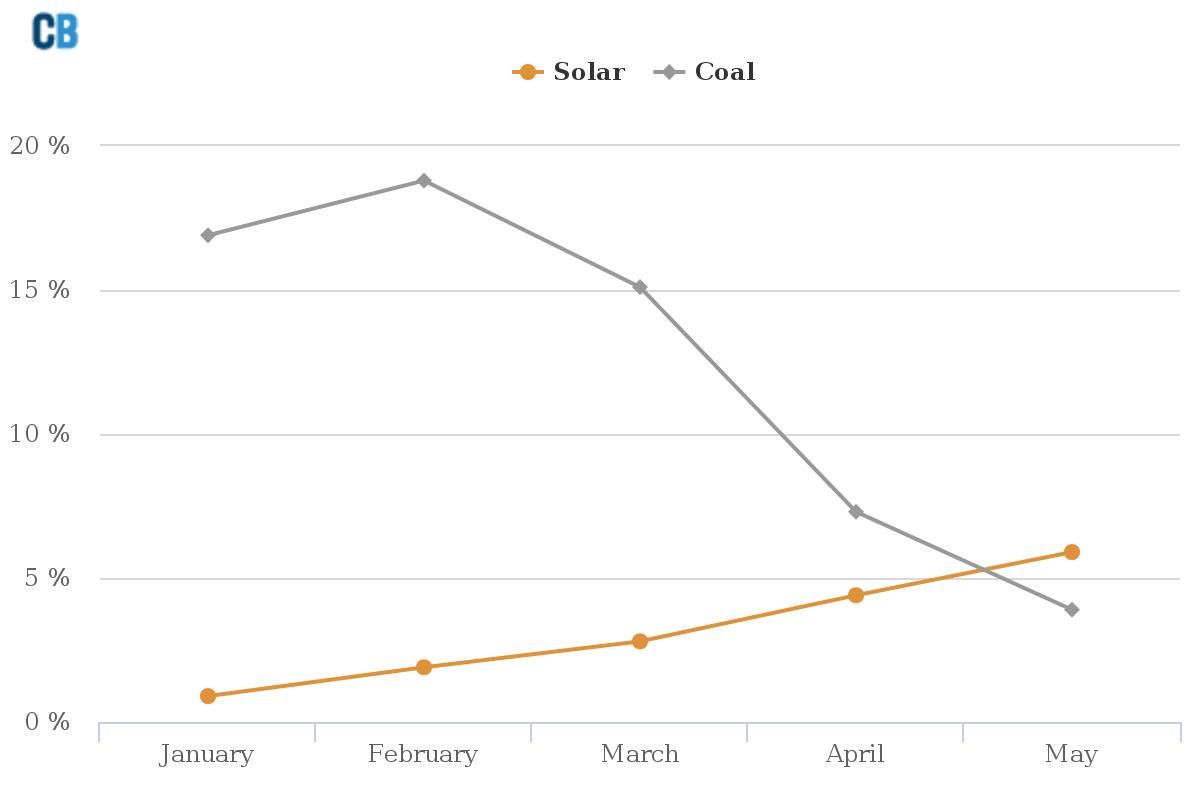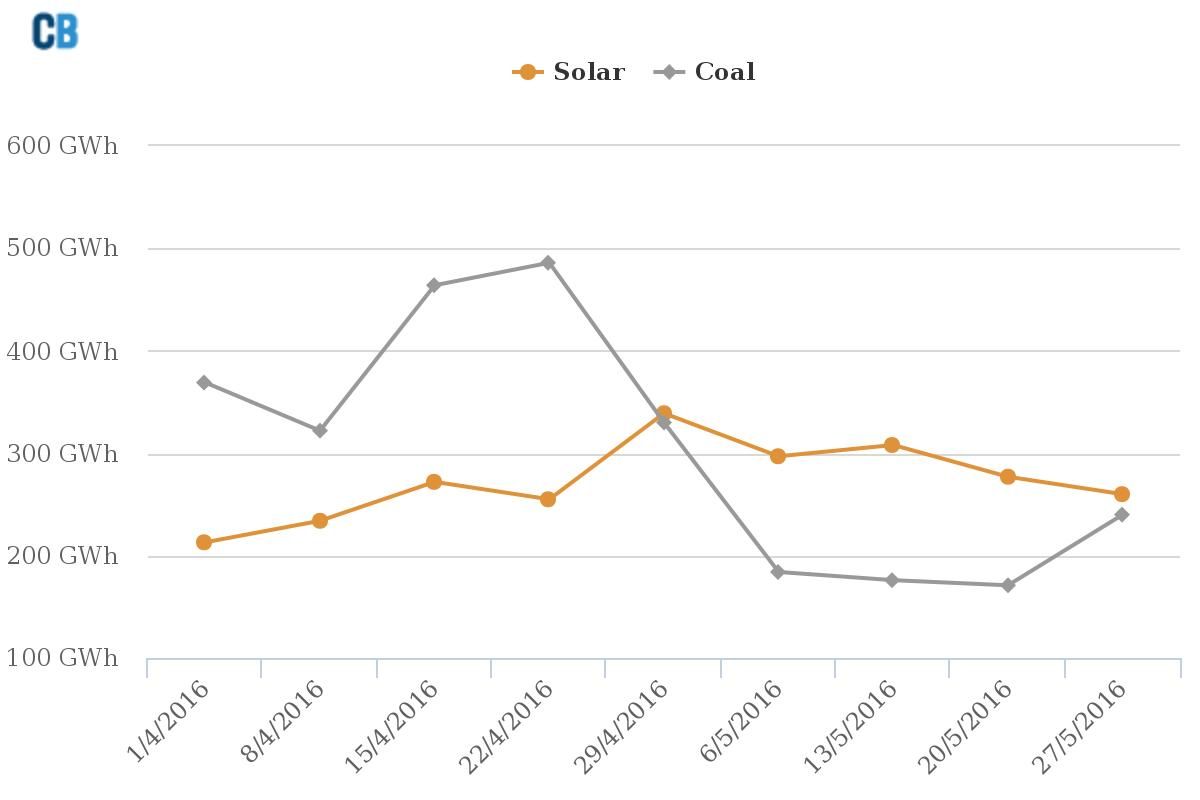The sun never set on the British Empire, but it's coming down on British coal.
The country that harnessed coal power to fuel decades of global geopolitical dominance is seeing coal output drop this year -- and at certain times fall well below solar. Coal fell from a 2016 high of 18.8 percent of U.K. energy production in February to 3.9 percent for May, according to an analysis from Carbon Brief. Solar production beat coal for the first full day in April, and then for the first full week in early May. Now we know it exceeded coal overall for the month of May.

Source: Carbon Brief
That's welcome news for a solar industry that's reeling from the loss of major government subsidies and the uncertainty of a potential exit from the European Union. This doesn't, however, spell the end of British coal as we know it. Back in January the numbers told an entirely different story: coal contributed 16.6 percent of U.K. electricity output, while solar barely registered at 0.9 percent.
Seasonality plays a big role for solar, so the U.K would need to dramatically ramp up capacity to compete with coal in the darker winter months. Coal ticked back up in the week of May 27, which Carbon Brief attributes to low wind production during that time.

This shows that it isn't really solar energy pushing out British coal -- it's largely wind and cheap natural gas. Wind production grew by 26.4 percent from 2014 to 2015, helping lift renewables' share of generation by 5.6 percent to 24.7 percent, according to the Department of Energy and Climate Change. Meanwhile, coal's share of production declined 7.1 percent that year.
Those cleaner competitors can change the long-term energy portfolio by pushing coal plants out of business. Government policy has its sights on coal too: the energy minister pledged to shut down coal power by 2025, and environmentalist Tories just called for moving that up to 2023.
Jurisdictions that have succeeded in phasing out coal have done so through a mix of energy alternatives, rather than relying on solar. Ontario closed its last coal plant in 2014 (and subsequently made coal power illegal, for good measure) by boosting wind and natural gas. Scotland shut down its last coal plant in March and is ramping up wind capacity. Germany has ramped up solar while closing nuclear plants, and has found it difficult to reduce emissions from coal-fired power plants at the same time. Single-month fluctuations in solar productivity don't move the needle on the macro trends.
On the other hand, if the solar industry hopes to outpace coal for a year, it has to first do so for a month. That box has been checked. Now we can turn to June and see if this was a fluke or not.



